Words Posy Gentles Photographs William Ford
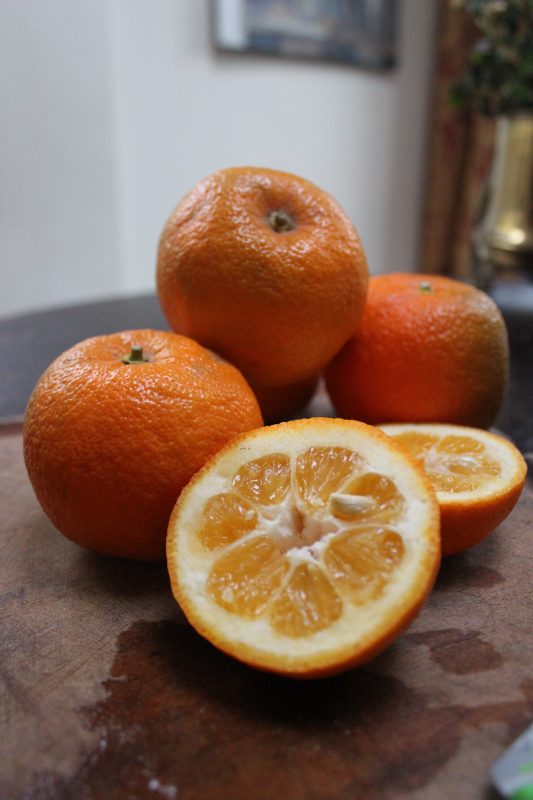
You need bitter, aromatic Seville oranges to make marmalade. Their season is brief – they arrive after Christmas and no more by the middle of February – but they freeze well and of course, can be preserved in marmalade.
Seville oranges have a fine and ancient provenance. They are the bitter orange, citrus x aurantium, which was gradually pushed aside in the 1600s by the arrival of citrus sinensis from China via Portugal, sold for its sweet flesh by such as Nell Gwynne to a wary Samuel Pepys who feared the juice might injure his stomach. Sevilles have survived largely because so excellent for making marmalade, with their exceptionally high levels of pectin and the intensely-flavoured oil in the skin which cannot be boiled away.
The smell of making marmalade is delicious and as much a pleasure as eating the final result. It’s an indulgent post-Epiphany occupation when you might feel the house rather cheerless with the Christmas tree de-tinselled and leaning against the bins, and the fairylights wound away for next year.
Some way into my marmalade-making career, I discovered cooking the fruit whole before shredding the skin. This makes it much easier to remove the pips and flesh and slice the skin. It also means that the water they are cooked in (which you keep) gets the full whack of pectin from the pips, flesh and skin. If you slice the oranges before cooking, you have to preserve the pips and flesh and tie them in a muslin bag to cook with the shredded orange skin so that you get the pectin. Some recipes recommend doing this even if you have cooked the oranges but I have found it unnecessary.
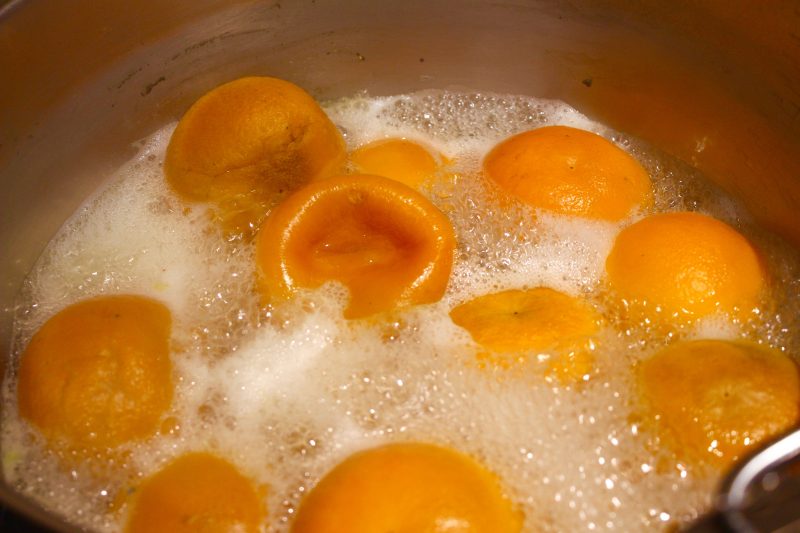
Cooking the Sevilles whole
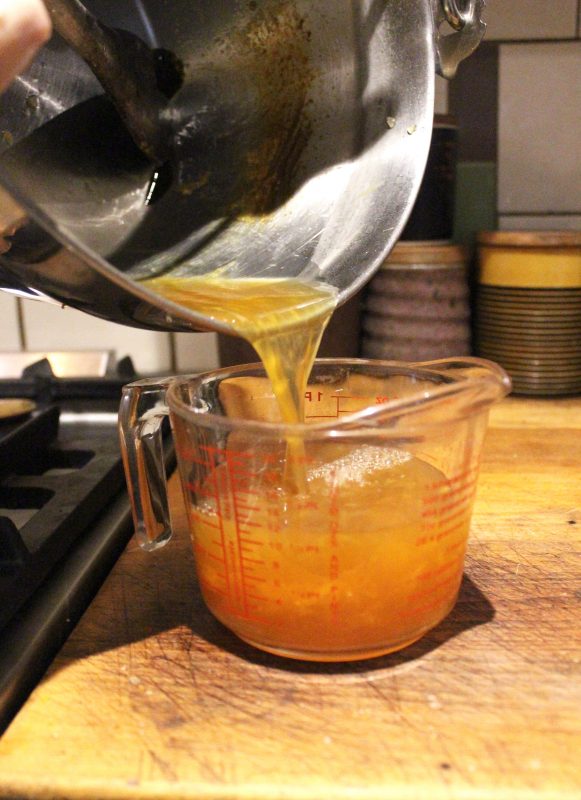
Saving the cooking liquid
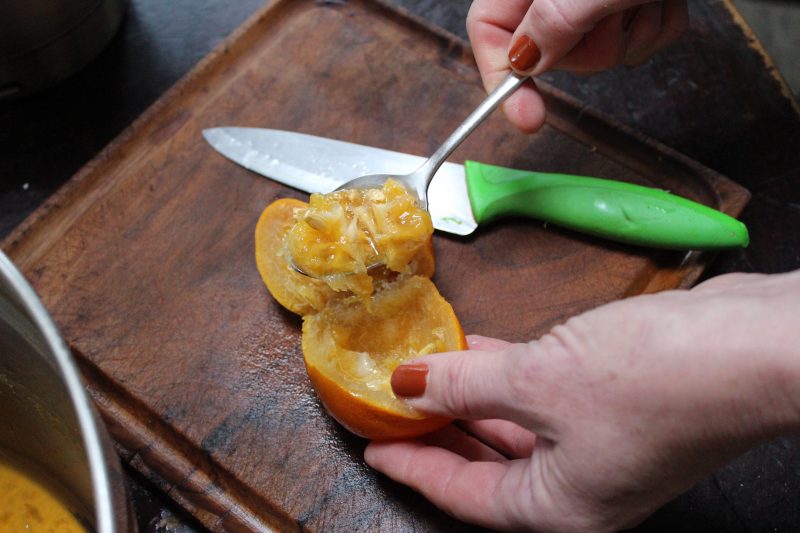
Spooning out the pips and flesh
I am not going to give you a recipe for marmalade as you can find very many of these online or in your cookery books. This is rather an entirely subjective experience of making marmalade, having made many batches over the years but never achieved excellence. I forget from year to year which recipe was used and every year the marmalade is rather different. These things I have learned however.
Equipment
You definitely need a preserving pan which can be bought new, but is very often to be found at bootfairs and in charity shops as well as lurking in cellars and the back of cupboards. A large saucepan doesn’t work nearly as well – the marmalade tends to burn in the bottom corners. The wide surface area of a preserving pan allows fast evaporation so that the cooking is gentler and gives a fresher flavour. That said, cooking marmalade is a ferocious affair: it rises suddenly and frothily in the pan and, as it approaches setting point, spits and bubbles like Etna. A wooden spoon with a very long handle prevents your wrists being spattered.
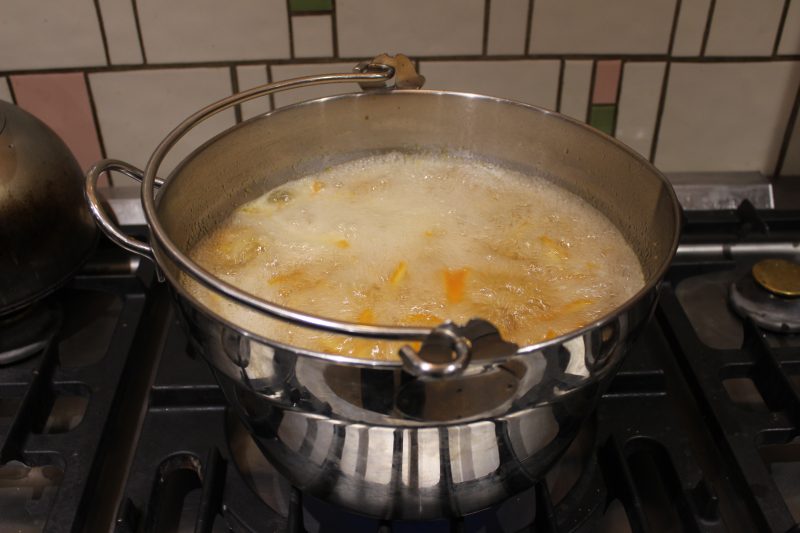
The preserving pan
I save jars all year round and don’t always bother to soak the labels off – the glue is so difficult to get off – but that’s up to you. You must however sterilise them before use. I buy waxed paper discs in a couple of sizes to put on the marmalade once it is poured into the jar, before replacing the lid.
For filling the jars, a wide, metal, short-spouted jam funnel and a ladle are useful for containing sticky mess.
Ingredients

Shredding the skin, saving the liquid and discarding the pips and pulp
The basic ingredients are Seville oranges, water, granulated sugar (you don’t need jam sugar because citrus fruit is rich in pectin), and lemon juice. There are recipes using dark brown sugar, a couple of dashes of whisky in the Scottish tradition, or a dash of Cointreau or Grand Marnier.
Quantities are important because they create the marmalade’s physical structure.
If you don’t like sugar then marmalade is not for you; marmalade will not happen without sugar. Marmalade uses a lot of sugar – usually twice the weight of fruit. With jam, it is often possible to use three-quarters of the weight of the fruit. I have tried using less sugar and made quite a good marmalade with one-and-a-half times the weight of sugar to fruit.
Harold McGee explains in his book, McGee on Food and Cooking (an enthralling book recommended to me by Sportsman chef Stephen Harris), how marmalade and jam happens: ‘When fruit is cut up and heated near the boil, the pectin chains are shaken loose from the cell walls and dissolve into the released cell fluids and any added water.’
To reform the pectin gel and set the marmalade, the cook needs to do three things:
Setting Point
Setting point is the biggest mystery of marmalade-making. McGee explains the science but only you can judge when setting point is reached and you won’t know that you were right until it has cooled in the jar. Leave it too long and you’ll be able to bounce your marmalade; too soon and it will be never more than a syrupy liquid.
Faced with your spitting, boiling cauldron, how do you decide? I have tried using a jam thermometer without success, maybe because the optimum heat varies according to where you are in relation to sea level. Then there are the fast-cooling methods: dripping marmalade on to a saucer you have just taken out of the freezer (if you have a freezer in the kitchen) or as Jane Grigson recommends, dripping it on to an ice cube. As the drip of marmalade cools it should wrinkle slightly as you push it, if it is ready. The thing is you have to work fast and turn the heat off as soon as it is ready and this is quite hard while you’re trying to wipe the steam off your glasses so you can read the thermometer or fishing among bags of peas to find the frozen saucer. I find the best method is to plunge in your wooden spoon, lift it above the pan, turn it sideways and let the marmalade drip off its edge. If it pours off like water, it needs to cook more; if it starts to drip slowly, moving down the side of the spoon to meet itself coming down the other side before languidly dropping back into the pan, turn the heat off.
Leave for 10 minutes before filling the jars so the shreds sink down and distribute themselves evenly in the marmalade.
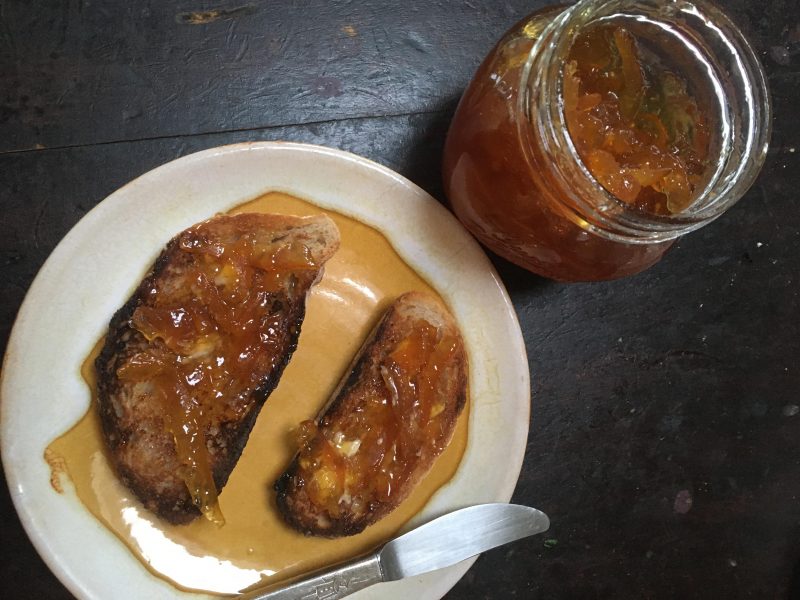
This marmalade is slightly over set to my mind, but perfectly edible
Bibliography
Jane Grigson’s Fruit Book
McGee on Food & Cooking: An Encyclopedia of Kitchen Science, History and Culture
Order from Top Hat and Tales
Look out for Lisa Valder’s Challah recipe coming soon in Faversham Life
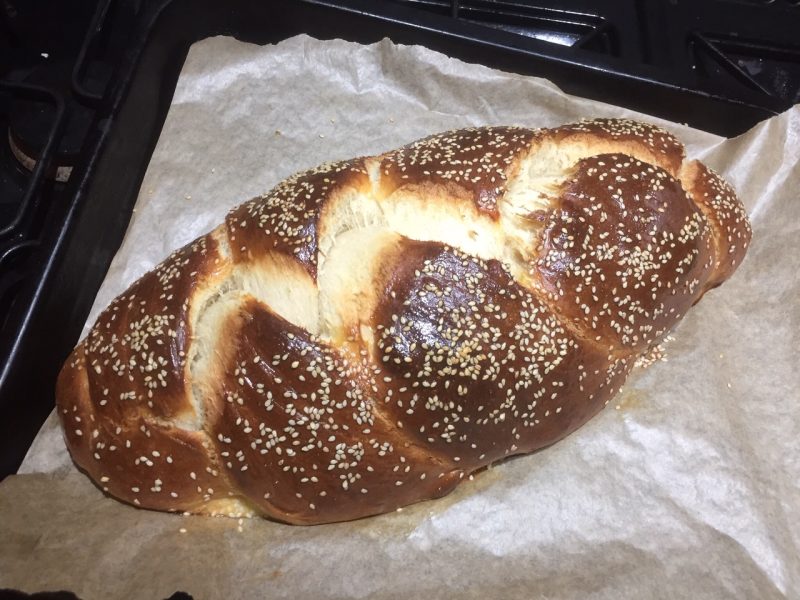
Lisa Valder’s Challah, photographed by the baker
Text: Posy Gentles. Photographs: William Ford